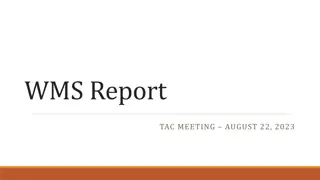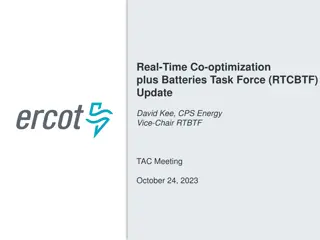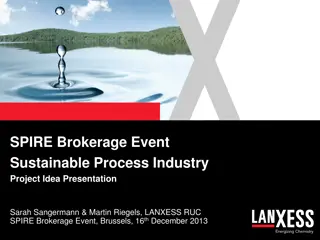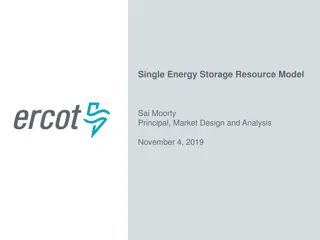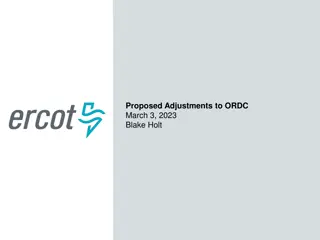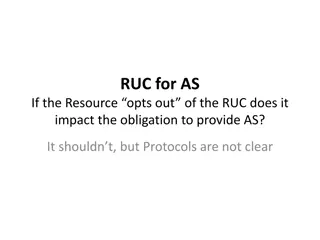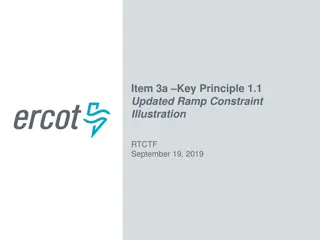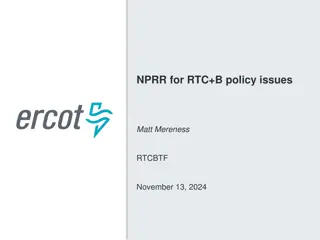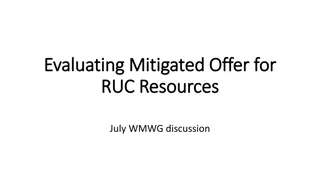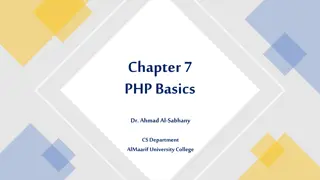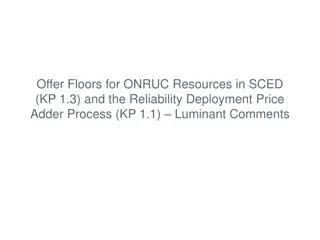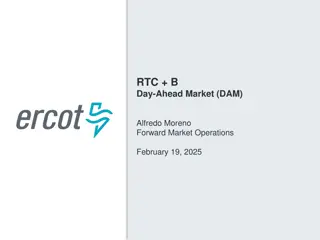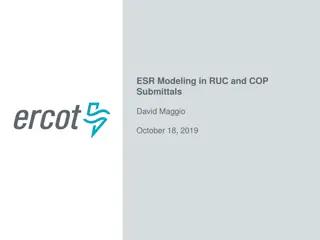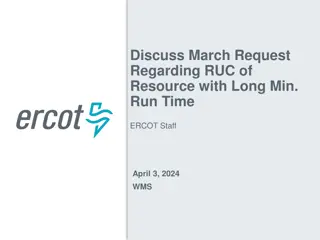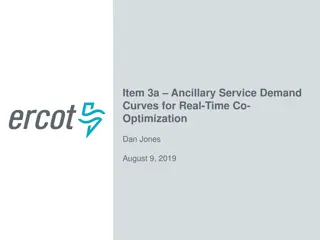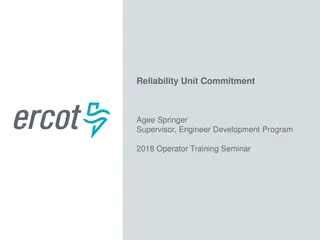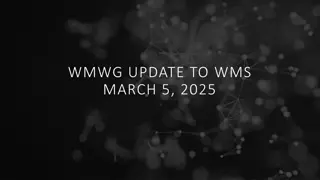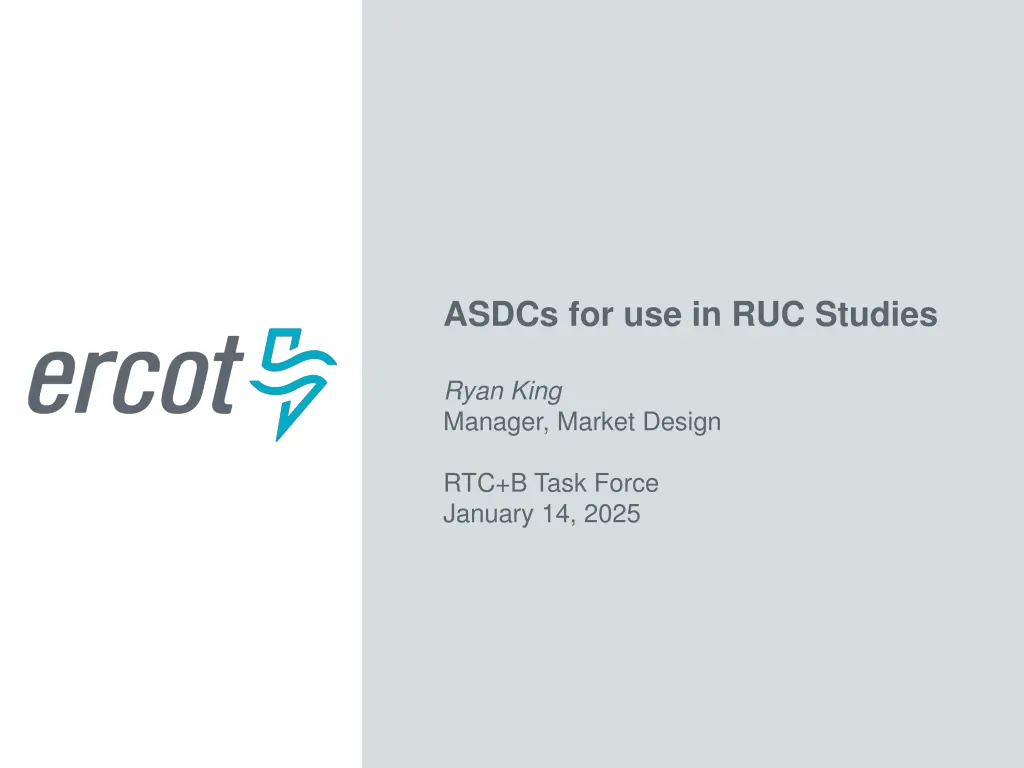
ASDCs for RUC Studies Review & Analysis
Delve into the review and analysis of ASDCs for RUC studies, focusing on resource capacity allocation, penalty curve evaluations, and protocol revisions to meet load forecasts and AS plans under the RTC framework. Explore the nuances of ASDC design to ensure reliability and compliance with NERC requirements.
Download Presentation

Please find below an Image/Link to download the presentation.
The content on the website is provided AS IS for your information and personal use only. It may not be sold, licensed, or shared on other websites without obtaining consent from the author. If you encounter any issues during the download, it is possible that the publisher has removed the file from their server.
You are allowed to download the files provided on this website for personal or commercial use, subject to the condition that they are used lawfully. All files are the property of their respective owners.
The content on the website is provided AS IS for your information and personal use only. It may not be sold, licensed, or shared on other websites without obtaining consent from the author.
E N D
Presentation Transcript
ASDCs for use in RUC Studies Ryan King Manager, Market Design RTC+B Task Force January 14, 2025
Agenda Recap: ADSCs for RUC Review and Analysis Approach Protocol Revisions Next Steps 2 PUBLIC
Recap Under RTC, RUC will look at the Resources planned to be available to determine whether additional Resource commitments are needed to meet the load forecast and Ancillary Service (AS) Plan, as well as resolve transmission congestion. RUC will use new information contained in the COP to determine how much capability for each AS product each Resource will be capable of providing Co-optimization will already inherently reduce the need for RUC by giving more flexibility to the RUC optimization engine RUC is a reliability backstop that is required to meet NERC requirements and maintain reliability. Ensuring RUC can meet the full AS Plan is critical to this function. Where RUC commits Resources to ensure sufficient capacity to meet the Load forecast and AS Plan, this will be accounted for in the SCED pricing run. The Reliability Deployment Price Adder process will apply to both energy and AS, and the adder for each AS product will be the positive increase in MCPC between the dispatch and pricing run 3 PUBLIC
Review and Analysis Approach ERCOT conducting analysis of ASDCs to understand the level of penalty curves required to meet the Load Forecast and AS Plan This will include analysis of Blended ASDC proposal by the Independent Market Monitor (IMM) ERCOT is utilizing the RUC-RTC application developed by its vendor in a test environment Objective is to determine whether ASDC penalty curve designs are sufficient to meet the Load Forecast and AS Plan or whether an adjustment is required. 4 PUBLIC
Review Cond Initial analysis is indicating that the ASDCs for RUC may be able to be similar to what will be used for DAM and SCED Ability to consider both energy and AS (absent the high penalty costs today) under RTC provides RUC optimization with more flexibility to allocate resource capacity E.g. without the high penalty cost protecting AS capacity today, the RUC optimization can select a Resource with higher commitment costs to be considered for Off-Line Non-Spin rather recommending a RUC commitment ERCOT is investigating whether a floor price at the tail of the ASDC may be necessary to ensure sufficient capacity is available to meet AS Plan At the tail end quantity of the ASDC, the penalty prices may cause RUC optimization to run short of AS The ASDC design for RUC needs to ensure that sufficient capacity is available to meet AS Plan, but it should not go beyond the AS Plan (i.e., not have the tail in place for DAM and SCED) 5 PUBLIC
Protocol Revisions Revisions to reflect RUC ASDCs will be made to Protocol Section 5.5.2 (2) Language will be derived largely from Protocol Section 4.4.12: Determination of Ancillary Service Demand Curves for the Day- Ahead Market and the Real-Time Market Language in this section is being updated to reflect IMM s ASDC proposal and will be incorporate and applied in parallel to Section 5.5.2 6 PUBLIC
Next Steps Provide analysis and discussion to inform a recommendation at next RTC+B Task Force meeting on 1/23 7 PUBLIC

